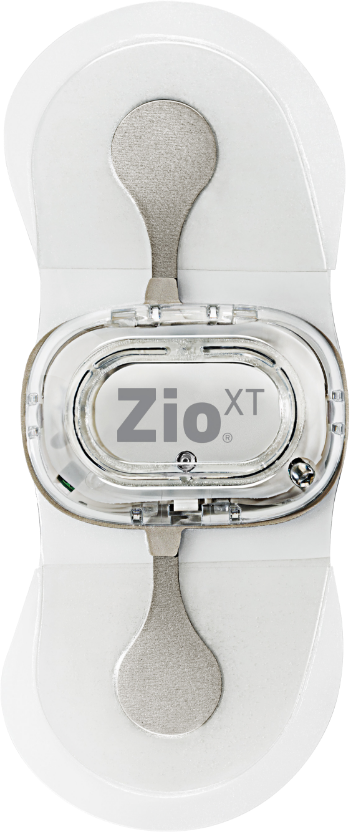Early detection of heart arrhythmias.
Why monitor your heart?
Irregular heart rhythms are alarmingly common. In the U.S, an individual's lifetime risk of developing AFib is roughly 1 in 4.1 And yet, many who experience this don't even feel symptoms and aren't aware that they have it.2 Arrhythmias are a leading cause of stroke and increase the risk of other serious outcomes.3,5
The good news is that long-term, continuous heart monitoring is helping in the shift to more preventative and proactive treatment and care.2

Why monitor your heart?
Irregular heart rhythms are alarmingly common. In the U.S, an individual's lifetime risk of developing AFib is roughly 1 in 4.1 And yet, many who experience this don't even feel symptoms and aren't aware that they have it.2 Arrhythmias are a leading cause of stroke and increase the risk of other serious outcomes.3,5
The good news is that long-term, continuous heart monitoring is helping in the shift to more preventative and proactive treatment and care.2
 Easy-to-wear
Easy-to-wear
cardiac monitoring.

How does it work?



The details.
 Payers + Healthcare ProvidersWant to learn more?
Payers + Healthcare ProvidersWant to learn more?
- Staerk, et al., Lifetime risk of atrial fibrillation according to optimal, borderline, or elevated levels of risk factors: cohort study based on longitudinal data from the Framingham Heart Study. BMJ. 2018.
- mSToPS Clinical Trial Demonstrates Zio by iRhythm Significantly Improves Health Outcomes for At-Risk Patient Populations, iRhythm Technologies, 2021.
- Wolf, et al., Atrial fibrillation as an independent risk factor for stroke: the Framingham Study. Stroke, 1991.
- Sgreccia, et al., Comparing Outcomes in Asymptomatic and Symptomatic Atrial Fibrillation: A Systematic Review and Meta-Analysis of 81,462 Patients. Journal of Clinical Medicine MDPI, 2021.
- Kotecha, et al., Atrial fibrillation in heart failure: what should we do? Eur Heart J., 2015.
- Alkhouli, et al., Burden of Atrial Fibrillation–Associated Ischemic Stroke in the United States. JACC: Clinical Electrophysiology, 2018.
- Steinhubl, et al. Three year clinical outcomes in a nationwide, observational, siteless clinical trial of atrial fibrillation screening—mHealth Screening to Prevent Strokes (mSToPS). PLOS ONE, 2021.
- Market survey of 200 respondents currently enrolled in a Medicare Advantage plan. Data on file. iRhythm Technologies, 2022.
- Directional and potential outcome based upon modeling using iRhythm’s mSToPS
Calculator. iRhythm Technologies, 2023.
*Assumes 10,000 members, 2,500 eligible with 25% participation. - Waalen, et al. Healthcare resource utilization following ECG sensor patch screening for atrial fibrillation. Heart Rhythm O2, 2020.